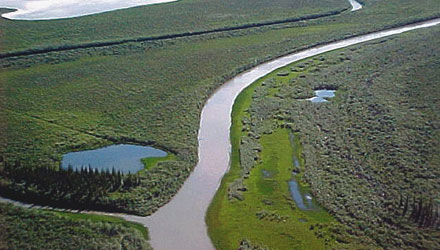Consistently warmer summers in the Arctic are a concern not just for the record low sea ice levels that have been experienced in the past decade, but for the potential for the Arctic tundra to thaw and release large amounts of stored carbon in its soils. The Arctic tundra covers an area roughly 15% larger than the 50 U.S. States combined.
Natalie Boelman, an assistant research professor at Columbia University, writes in a CNN opinion article that the “consistently balmier summers will cause soils to warm and thaw to greater depths, unleashing long-stored carbon into the atmosphere in the form of carbon dioxide and methane, both of which are potent greenhouse gases.”
Boelman also explains how the changing climate on the tundra means adaptation for many species that frequent the area, including migratory birds. She says that the warmer summers can allow for the deeper thawing, changing which vegetation can thrive on the tundra.
What my colleagues and I are discovering from our own work in Alaskan tundra is that this shift in vegetation cover has implications — some good, some bad — for the animals that depend on it for food and shelter.
Boelman closes with her opinion on how we should look to the Arctic for an indication of how climate change will ultimately impact the lower latitudes.
Since the Arctic as a whole is responding to climate change earlier and more acutely than the rest of the planet, we should think of it as an early warning system — a proverbial canary in a coalmine. Perhaps if we pay closer attention to how the tundra is changing, we can learn some practical lessons on what types of changes to expect here at lower latitudes, which would enable us to mitigate the consequences, or at least plan for how to cope with them.
Read the whole article at CNN.com
http://www.cnn.com/2012/09/25/opinion/boelman-arctic-tundra/
